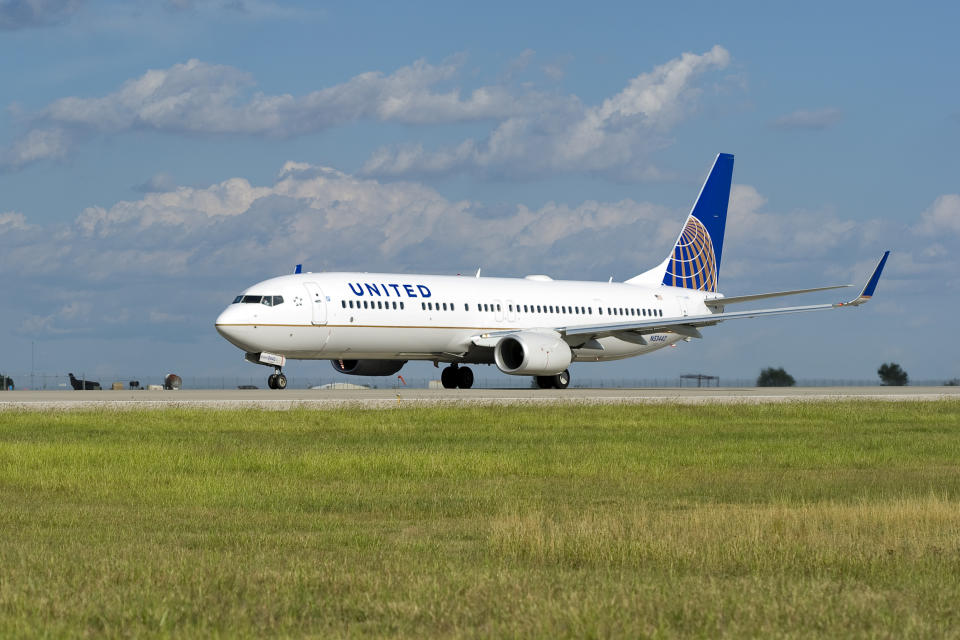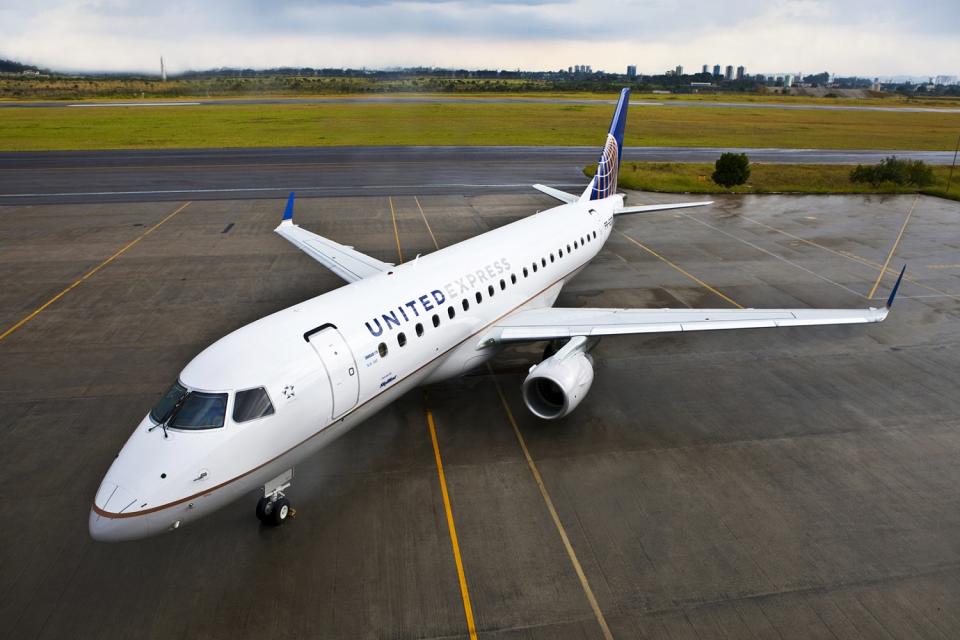3 Ways United Airlines Is Taking a Different Path
Just a few years ago, United Airlines (NASDAQ: UAL) seemed permanently destined to be the least profitable of the three big U.S. legacy carriers. Delta Air Lines (NYSE: DAL) was the clear industry leader, with pre-tax margins as much as 5 percentage points higher than United, while American Airlines (NASDAQ: AAL) took second place more often than not.
However, United's management has pulled off an impressive turnaround over the past two years or so. The margin gap relative to Delta has started to shrink, and United has surpassed struggling rival American in profitability.
The company didn't just copy Delta's strategy to achieve this comeback. Instead, it has gone its own way in the hunt for stronger profitability. Let's look at three ways that United is diverging from its peers on strategy.
1. Getting a taste for used jets
Fleet strategy is one area where the carrier is carving its own path. It has shown a growing interest in buying or leasing used jets to avoid the substantial expense of new aircraft. In 2015, the airline agreed to lease up to 25 used Airbus A319s from AerCap. Most of those planes will have arrived by the end of this summer.
Last week, United announced that it had agreed to buy 19 used 737-700s between December 2019 and December 2021. Management also stated that the carrier would continue to make opportunistic acquisitions of used aircraft.

United Airlines is refreshing its fleet with a mix of new and used jets. Image source: United Airlines.
United is not exactly a pioneer with this strategy. Nearly a decade ago, Delta went on a used-aircraft acquisition spree. It bought dozens of out-of-favor MD-90s and leased 88 used Boeing 717s from Southwest Airlines. This allowed Delta to retire its oldest planes while conserving cash to pay down debt.
Yet more recently, Delta has tilted the other way, perhaps because it now has a strong balance sheet. It hasn't added a used jet to its mainline fleet in years, whereas it plans to buy more than 200 brand-new mainline jets between 2019 and 2021. As for American, the largest U.S. airline has favored new jets pretty consistently. In fact, it has added nearly 600 new aircraft to its fleet since 2014 (including regional jets).
2. Growing the 76-seat regional jet fleet is not a priority
Another way that United has diverged from its peers is in its comparatively low use of large regional jets.
Dual-class regional jets, outfitted with between 65 and 79 seats (but most commonly, 76 seats), have been an important tool for the legacy carriers in recent years. Labor costs are much lower for regional jets, but these larger models still have enough space for first-class and extra-legroom seats that fetch premium prices. However, the legacy carriers' pilot unions have negotiated very specific restrictions on how many regional jets each one may operate, in order to prevent the airlines from outsourcing even more flying to regional airlines.
American has the fewest restrictions on its regional jet fleet. Entering 2019, it had 272 regional jets outfitted with around 76 seats -- with 50 more on the way by the end of 2020 -- and 119 regional jets in the 65-70 seat range. Meanwhile, Delta reached a historic agreement with its pilots in 2012, allowing it to expand its fleet of large regional jets (most of which have 76 seats) from 255 to 325, in exchange for also growing its mainline fleet with the 88 used 110-seat 717s.

United has fewer 76-seat jets, like this one, in its regional fleet than its peers. Image source: United Airlines.
United also negotiated the right to expand its fleet of large regional jets from 255 to 325 if it adds 88 mainline aircraft in the same size range as the 717. But management has shown no interest in using this option. It has stuck with a fleet of 153 76-seat regional jets and 102 70-seaters, complemented by more than 300 50-seat jets.
Instead, it is upgrading its fleet of 50-seaters by converting some CRJ700s -- which often fly with 70 seats -- into a roomy 50-seat configuration. This means it doesn't have to operate a small mainline jet, which would have relatively high unit costs. The downside of United's unique regional jet strategy is that unit costs for its regional operations will increase.
3. Sticking with the most basic of basic economy fares
Finally, like its peers, United has introduced bare-bones basic economy fares to compete on price with ultra-low-cost carriers. But unlike Delta -- which was the first U.S. airline to test basic economy fares -- United doesn't allow customers who purchase basic economy tickets to bring full-size carry-on bags. They are only entitled to a small personal item that can fit under the seat.
American initially had a similar policy, but it reversed course after determining that the move was hurting sales. That leaves United as the only major carrier with a "bag ban" like this. Nevertheless, management seems committed to this somewhat draconian policy.
It's hard to argue with success
United executives haven't been playing it safe in their efforts to revive the company. The airline risked alienating customers with its ultra-restrictive baggage policy for basic economy tickets. Its turn toward buying more used jets could have driven up maintenance costs or hurt reliability. And outfitting jets capable of holding 70 seats with just 50 seats will put some pressure on unit costs.
But so far, these moves have paid off for shareholders. The company has returned to profit growth and seems to have the wind at its back. United is still a long way from matching Delta's level of profitability, but it is in much better shape than it was two to three years ago.
More From The Motley Fool
Adam Levine-Weinberg owns shares of Delta Air Lines and Southwest Airlines and is long January 2020 $20 calls on American Airlines Group. The Motley Fool owns shares of and recommends Delta Air Lines and Southwest Airlines. The Motley Fool has a disclosure policy.

 Yahoo Finance
Yahoo Finance 